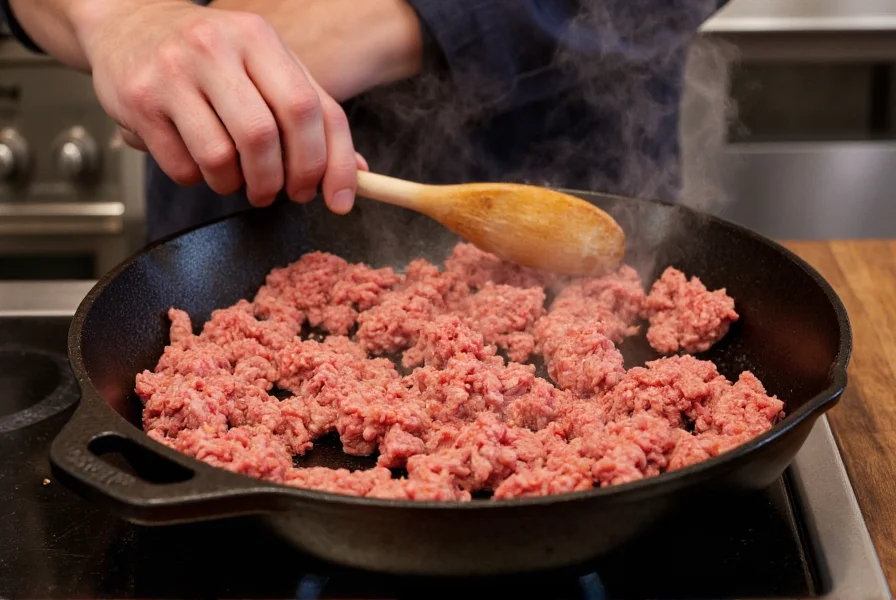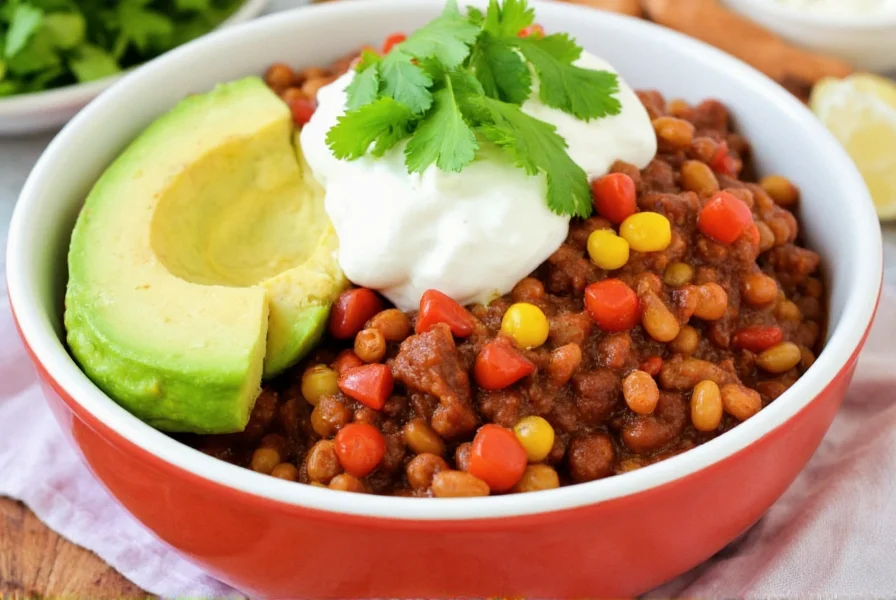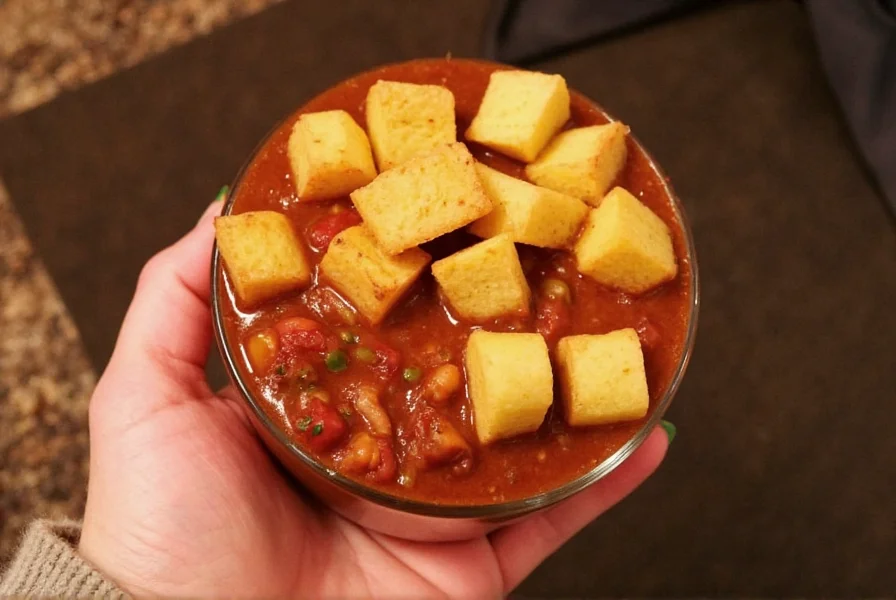There's a reason crock pot chili remains a beloved staple across American households. The slow cooker transforms simple ingredients into a deeply flavorful meal through gentle, consistent heat that allows spices to meld while keeping meat tender. After decades of testing chili recipes, I've found the magic happens when you understand not just what to add, but when to add it during the cooking process.
The Essential Crock Pot Chili Formula
While regional variations exist, the foundation of exceptional slow cooker chili follows this ratio:
| Ingredient Category | Proportion | Critical Examples |
|---|---|---|
| Meat | 30% | Browned chuck roast, ground turkey, or plant-based crumbles |
| Beans | 20% | Kidney, black, or pinto (soaked overnight for better texture) |
| Tomato Base | 25% | Crushed tomatoes, tomato paste, fire-roasted diced tomatoes |
| Liquid | 15% | Beef broth, coffee, or beer for depth |
| Spices | 10% | Freshly toasted cumin, smoked paprika, oregano |
Why Browning Meat First Makes All the Difference
Many crock pot chili recipes skip this critical step, dumping raw meat directly into the slow cooker. Professional chefs know that browning meat before slow cooking creates the Maillard reaction, developing complex flavor compounds that can't be replicated through slow cooking alone. Take 10 extra minutes to sear your meat in batches—this simple technique elevates your easy crock pot chili recipe from good to exceptional.

Step-by-Step Perfect Crock Pot Chili Method
- Prep ingredients: Dice onions, mince garlic, measure spices (don't skip toasting whole spices)
- Brown meat: In batches to avoid steaming, then set aside
- Sauté aromatics: Cook onions until translucent, add garlic for 1 minute
- Add tomato base: Stir in tomato paste until it darkens slightly
- Layer ingredients: Place meat at bottom, then beans, vegetables, spices, liquid
- Cook on LOW for 6-8 hours (never HIGH for chili—it makes beans mushy)
- Finish with flavor boosters: 30 minutes before serving, add 1 tbsp cocoa powder or 1/2 cup strong coffee
Common Crock Pot Chili Mistakes to Avoid
- Overfilling the slow cooker: Never fill beyond 2/3 capacity for proper heat circulation
- Adding dairy too early: Sour cream or cheese should be added when serving, not during cooking
- Skipping the resting period: Let chili sit 15-20 minutes after cooking for flavors to settle
- Using old spices: Test cumin by rubbing between fingers—if no aroma, replace it
Adapting Your Crock Pot Chili for Dietary Needs
One of the beauties of slow cooker chili for meal prep is its adaptability. For vegetarian crock pot chili, substitute meat with extra beans and mushrooms. Make it gluten-free crock pot chili by ensuring your broth and spices are certified GF. For low sodium crock pot chili, use no-salt-added tomatoes and create your own spice blend without commercial seasoning packets.

Serving and Storage Tips from Culinary Experience
The true test of authentic crock pot chili recipe quality comes the next day. Chili flavors deepen as it rests, making it ideal for meal prep. Store in airtight containers for up to 5 days or freeze portions for up to 3 months. When reheating, add a splash of broth to restore moisture. For game day gatherings, keep finished chili warm in the crock pot on 'warm' setting for up to 2 hours—any longer risks overcooking the beans.
Frequently Asked Questions
How long should chili cook in a crock pot for best results?
For optimal texture and flavor development, cook chili on LOW for 6-8 hours. Cooking on HIGH for shorter periods (4 hours) often results in mushy beans and less developed flavors. The extended LOW setting allows collagen in meat to break down gradually while spices meld naturally.
Can you put raw meat directly in a crock pot for chili?
While technically possible, skipping the browning step significantly compromises flavor. Raw meat added directly to slow cookers produces gray, boiled-tasting results without the complex Maillard reaction flavors. Always brown meat first for superior easy crock pot chili recipe outcomes.
Why does my crock pot chili turn out watery?
Watery chili typically results from either overfilling the slow cooker or using too much liquid initially. The slow cooker's sealed environment prevents evaporation, so reduce liquid by 25% compared to stovetop recipes. If already watery, remove lid during last hour of cooking or make a slurry of 1 tbsp cornstarch with 2 tbsp cold water.
What's the secret ingredient for amazing crock pot chili?
Professional chefs often add unexpected depth with 1-2 tablespoons of unsweetened cocoa powder, a splash of strong coffee, or even a small square of dark chocolate during the last 30 minutes of cooking. These ingredients enhance richness without making the chili taste sweet or chocolatey.
Can you cook crock pot chili overnight safely?
Yes, cooking chili overnight (8-10 hours) on LOW is perfectly safe and often produces superior results. The slow cooker maintains temperatures well above the food danger zone (140°F+). Ensure your slow cooker is in good working condition and never exceed 12 hours of cooking time to prevent potential texture issues.











 浙公网安备
33010002000092号
浙公网安备
33010002000092号 浙B2-20120091-4
浙B2-20120091-4